CH4 and N2O Emissions in a Rice Field
First Measurements in the Uruguayan Productive System
DOI:
https://doi.org/10.31285/AGRO.17.533Keywords:
rice paddy soil, greenhouse gases, N fertilizationAbstract
Irrigated rice fields are major sources of two important greenhouse gases (GHG), methane and nitrous oxide. As an initial step towards obtaining local information, emissions of CH4 and N2O from rice paddy soil were measured by the static chamber technique in greenhouse and field experiments conducted in eastern Uruguay. In the greenhouse experiment, the effect of two flooding moments (21 and 45 days after emergence) and nitrogen fertilization (0 and 50 kg N ha-1) on gas emissions was studied. Early flooding and nitrogen fertilization tended to increase N2O emissions. In the field experiment, effect of winter soil cover crop and nitrogen fertilization (0 and 82 kg N ha-1) were tested. Higher CH4 fluxes were observed mainly during the reproductive stage of the plant in the N-fertilized treatment with ryegrass winter crop. N2O flux peaked at flushing. Results indicate that the use of cover crops might increase GHG emissions during the rice cycle. Despite differences in agronomic management practices employed in Uruguay, CH4 and N2O fluxes are within magnitudes previously reported for rice fields worldwide.
Downloads
Downloads
Published
How to Cite
Issue
Section
License
Copyright (c) 2021 Agrociencia Uruguay

This work is licensed under a Creative Commons Attribution 4.0 International License.
| Article metrics | |
|---|---|
| Abstract views | |
| Galley vies | |
| PDF Views | |
| HTML views | |
| Other views | |

















